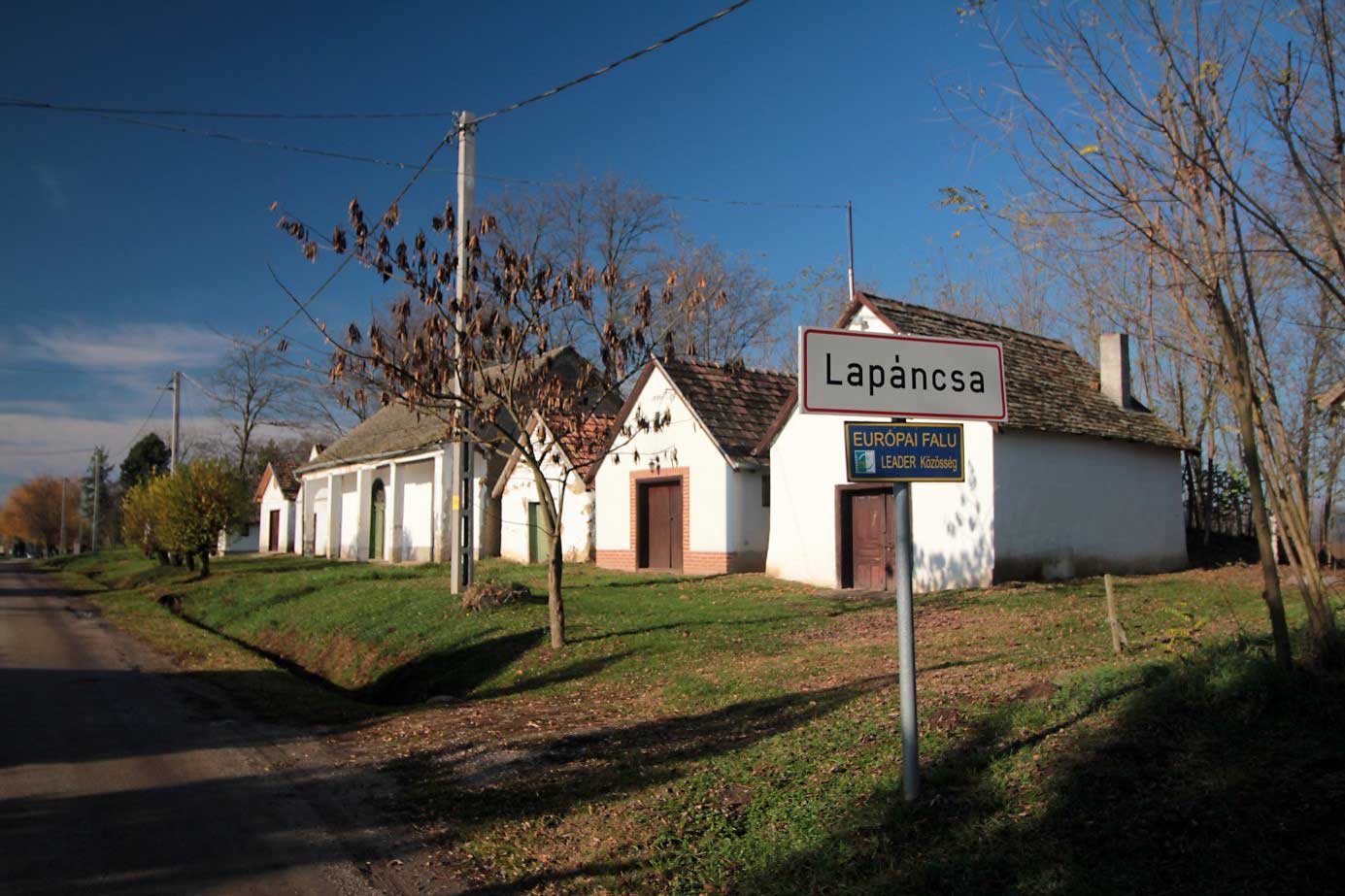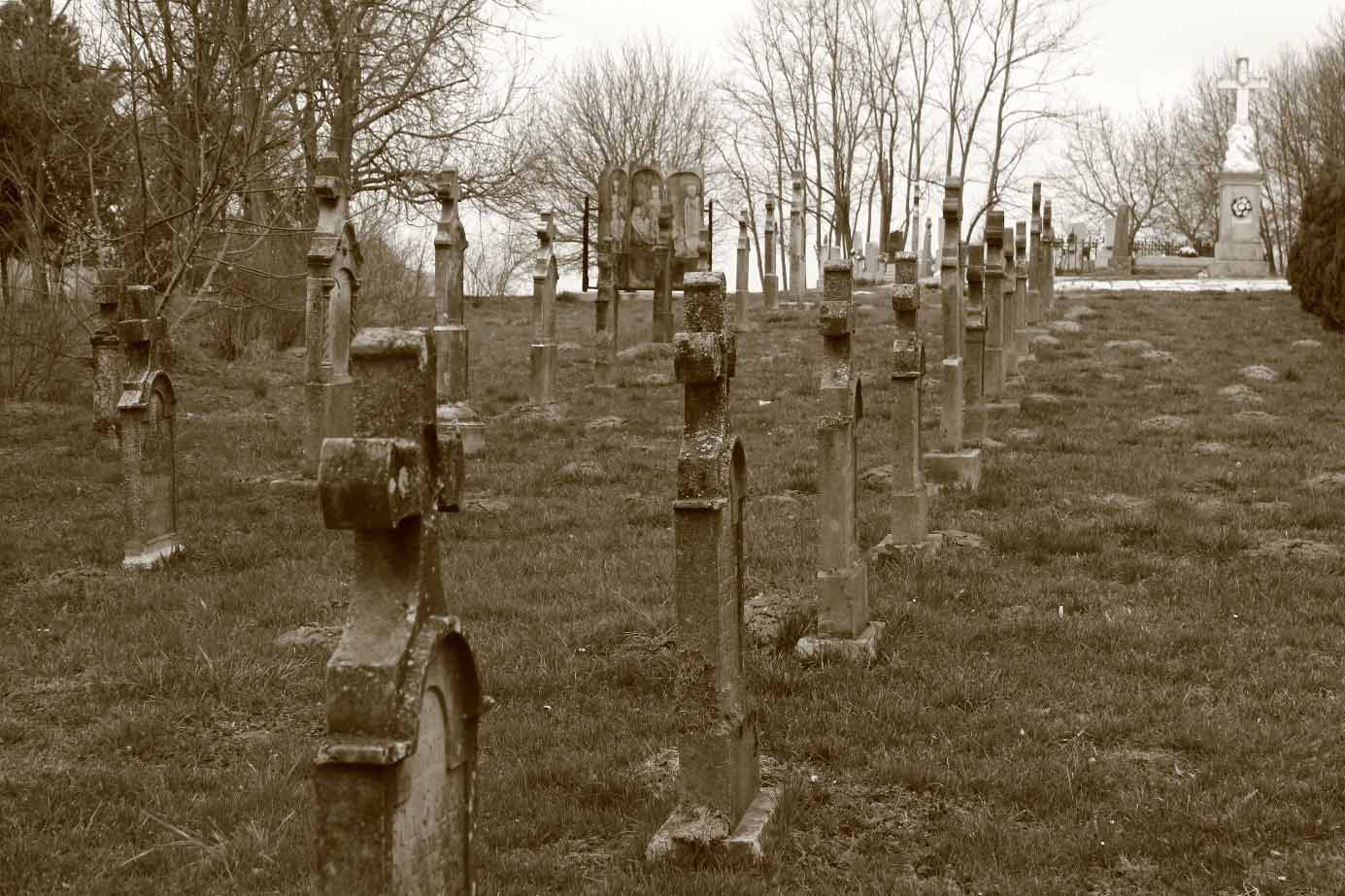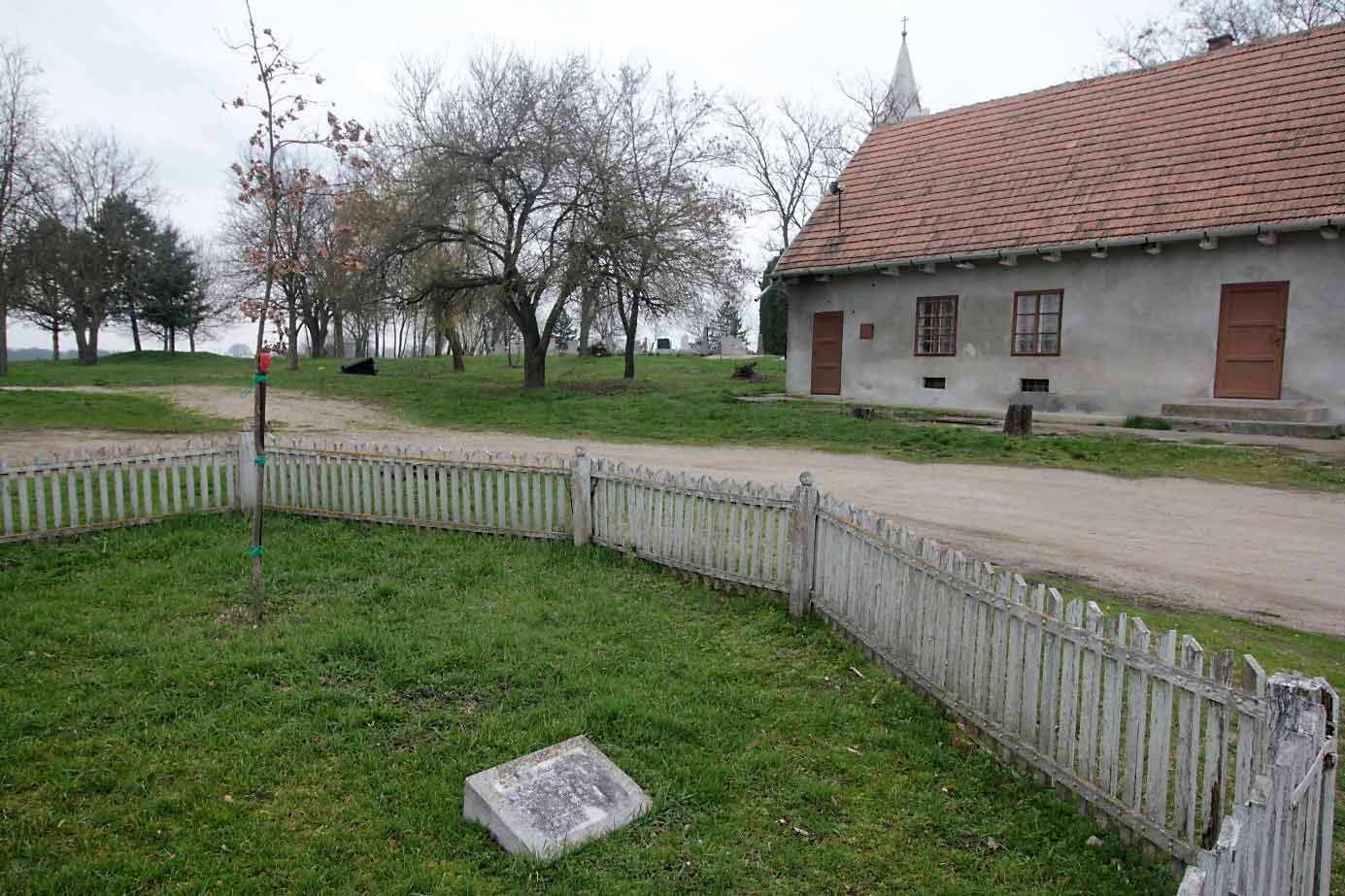Lapáncsa is situated south of the Villany Mountains in the triangle formed by the Danube and Drava rivers. According to geographical landscape schedule it is located in the Drávamellék area. It is one of Hungary’s southernmost settlements, only 2.5-6 km away from the Hungarian-Croatian border. It is adjacent to Magyarbóly from north, Beremend from the west and Illocska from east and south. The settlement belongs to the Nyárád-Harkány loess-region in morphological terms.
The name of the village occurs first in 1349 as Lappanch. Probably it comes from the Hungarian laponya, lapály (plain), swampland words, it originates from the ‘lapos’ (flat) word. It appeared as Lappanch and Gátwég in the written records in medieval times. The dam coming from the Danube River terminated here. There was a big battle in those days between Magyarbóly and Lapáncsa. The settlement belonged to the Dárdai later to the Veterán families. Finally it got to the Esterházy dynasty. It was abandoned during the Turkish occupation. After the expulsion of the Turks the settlement was given to the heir of Count Fridrich Veterani Mallentheim in 1698. It was entirely perished during the battle and was only rebuilt in 1749 when the Dárda lordship was bought by Palatine Pál Esterházy. German settlers arrived to the place around 1760; they were followed by Roman Catholic Hungarian folks. The beginning of the 20th century, the period until the economic crisis was the heyday of the village; most of the settlement was built or rebuilt during this period. Almost a third of the population was relocated after the Second World War. Since then, the population has been continuously decreasing, which was even speeded up under border closing of the Rakosi Era or the centralization concept in the 1970s.
The village has no railway station. The nearest station is located in Magyarbóly. Lapáncsa’s district is rather dense in hydrological point of view, and the Karasica stream breaks to smaller water-courses next to it. The village’s population is just over 200 inhabitants, it is a typical representative of small villages of Baranya County. The settlement has one street which has the typical old German building form. The number of houses is 74.
Lapáncsa’s infrastructural supply is average. They receive their drinking water through pipelines; the system was handed over to the population in 1993. The proportion of apartments equipped with running drinking water is 98%. The local water company is owned by the municipal government.
Most of the population are Roman Catholics. Unfortunately there are no nurseries, kindergartens or primary schools in operation in the village. The latter was abolished in 1975, since then the children go to primary school to Magyarbóly. Occasional events are held in the community centre. There is a medical order two times a week in the health house which is located in the town hall building.
The village is famous for the Roman Catholic Church, which was erected in 1781 in honour of the Immaculate Conception. The early Baroque Roman Catholic Church is of outstanding value, a listed building that reflects the rank of the former settlement. The building is a nationally protected monument. The church is special because this was also a burial ground for the Lapáncsa people in the old days. The cemetery surrounds the church and there are a lot of old, beautifully carved stone cenotaph, which are to be protected as a historic environment.
No major renovation was carried out on the church building so its consistence steadily deteriorated. In order to avoid further deterioration the municipality repaired the roof and tower’s helmet in 1992. However, the walls of the church have been wetted up to 3-4 meters high due to the lack of drainage around the building. The building was “front-loaded”, that is separated from the tower of the church nave and the crack has been several inches wide. The monument’ preservation therefore became necessary. In the churchyard holding the cemetery function as well, the pavement became cracked; the old brick fence canted and the vegetation in the park became senescent so it was time to renovate it too.
Through the development and renovation the church was refurbished as well as its surrounding got a brand new outlook, the garden looks just beautiful with the planting, the placement of new benches. The brick fence was renewed in its original form and the drainage problem was solved.
The attendance opportunity of religious tourism purposes has been improved with the development. One hand the purpose of worship and burial use may flow in circumstances of higher standard. On the other hand the monument with a significant value can get a decent role increasing the attraction of the local tourism.
The tower of the Roman Catholic Church has long been a nesting place for barn owls. The birds could nest here without any difficulties before the renovation, as they were able to get in and out freely through the cracks in the windows. However, during the renovation of the church this idyllic state for the owls seemed to disappear. But the village population led by the mayor of the settlement thought it was important to protect the owls. Therefor two holes in the right size of the birds were made during the installation of the new tower windows to let them fly in and out. Barn owls can use the tower now and in the future as they wish.
The press-houses have a special status and they have already been locally protected.
The togetherness of the former residents living in Germany and the current residents in Lapáncsa is symbolized by the planted memorial tree protected by a white fence at the centre of the village.








